[title End-Mission Research Report – May 2nd]
[category science-report]
End-of-Mission Research Report – Crew 315
Summary of Crew Research Projects:
Title: Methodology Extending Mobility Range on Mars
Principal Investigator: David Laude
Description: Mobility on Mars is key to any mission for maximizing scientific gains. Main mobility for humans is motorized rovers with limited range. Mobility can be extended for examination of more remote objects. Objects of interest can be observed from rover accessible vantage points. Two observations can be used to triangulate object position (no GPS on Mars). Position can be found or placed on map to determine travel range. If range is beyond rover range, but within rover + foot + drone range then range can be extended by foot and then deploying an FPV drone/helicopter. Drone can collect close up HD photos.
Objective: An EVA team will set out on EVA with a small drone equipped with HD camera and FPV capability. EVA team will follow a planned course from maps. When rover is at maximum range (real or simulated), EVA crew will set out on foot with drone. Once EVA crew is close enough to the object, the drone pilot will launch it. Drone pilot will fly drone in full sim suit while drone spotter(s) stand nearby. Drone will acquire the needed object images from close up Image data will be retrieved from drone in Hab for analysis to determine if mission was a success. Project methods will be reviewed for success or needed improvements
Research Summary: The project has completed with a close encounter with the Monolith objective by drone after having triangulated its position from two vantage points and placing object on map. From that we plotted a course by rover as close as we could get followed by a short hike up a hill where the drone was launched. This shows the usefulness of the methodology for examination of remote objects further than one would ordinarily expect.
Title: Evaluating Drone Piloting During EVA on Mars
Principal Investigator: David Laude
Description: With the success of Ingenuity paving the way, piloted drones will undoubtedly be used by humans on Mars. The purpose of this project is to study drone piloting with EVA suit and to evaluate any operational impediments. Co-investigators will evaluate drone flight control performance on standardized flight patterns, making use of URC fields and possibly other locations. Co-Investigators will rate each flight through several metrics. No EVA suit flights will take place prior to and/or just after sim.
Objectives: Metrics like accuracy (measured distance to center of target) and speed (time) of flying drone to marked targets of varying ranges will be evaluated via comparative analysis. Comments on difficulties experienced will also be documented.
Research Summary: This project is completed. It has shown what one would expect for piloting a drone in EVA suit. Poorer visibility in EVA can cause temporary loss of drone sighting by both naked eye and FPV display. Displays need to be brighter. In addition, the wearing of gloves impedes fine drone control.
Title: Illustrating a Mars Analog Mission as an artist.
Principal Investigator: Timothy Gagnon
Description:In March 1962, NASA Administrator James Webb addressed a two-paragraph memorandum to NASA Public Affairs Director Hiden T. Cox about the possibility of bringing in artists to highlight the agency’s achievements in a new way. In it, he wrote, “We should consider in a deliberate way just what NASA should do in the field of fine arts to commemorate the … historic events” of America’s initial steps into space.
Shortly thereafter, NASA employee and artist James Dean was tasked with implementing NASA’s brand-new art program. Working alongside National Art Gallery Curator of Painting H. Lester Cooke, he created a framework to give artists unparalleled access to NASA missions at every step along the way, such as suit-up, launch and landing activities, and meetings with scientists and astronauts. Over the years, NASA artwork has helped spark national pride and accomplishment. Technology, whether from the 1960s or today, documented these missions extensively, but artists are able to pull in emotion and imagination unlike data-collecting machinery. The relationship between science and art continues to inspire the public and inform us of current missions. When I was invited to participate in a MDRS analog mission as an artist, I immediately thought of contributing the same way as the artists involved in the NASA Art Program of the 1960’s and 1970’s.
Objectives: To document my experience and that of my crew mates by creating digital and fine art of our increment. I have already designed our mission patch, our crew portraits and a "Space Flight Awareness" themed crew poster. I intend to bring my iPhone camera, possibly my iPad as well as a sketch pad along with pens and colored pencils to sketch while there and then turning those into finished art post mission.
Research Summary: Due to the limited field of view offered by the suit helmet and the limited dexterity of the gloves, sketching during an EVA proved impossible. However, I was able to take and request certain photos inspired by the Apollo lunar missions and paintings by artists I admire to create tributes to those missions and those artists. This was accomplished during four EVAs of mine and multiple EVAs by my crew mates. Together we have assembled a portfolio of photographs that will be the basis of a series of art pieces based on the theme, “What it looked like vs What it felt like.” Analog vs Artemis missions to Mars. I will donate those pieces to The Mars Society to hopefully use in their fund raising efforts.
Title: Essay for Harper’s Magazine
Principal investigator: Elena Saavedra Buckley
Description: The primary reason for my visit to the MDRS is to write an immersive, in-depth reported essay for Harper’s Magazine, to run as a feature at some point later in the year. This piece is assigned at Harper’s, where I am an editor, and has been approved by the MDRS via Michael Stoltz, the media and PR liaison.
Objectives: The aim of the article is not only to capture the experience of our mission, but to zoom out and consider the purpose of Martian simulations, of eventual Mars missions, and the place these phenomena have in the American imagination today.
Research Summary: My reporting went well, and I was able to talk individually with my crewmates and with everyone as a group multiple times. I’m excited to bring all my reporting to Earth, continue my research, and put it all together in 1g.
Title: Examining oyster mushroom growth in a Martian greenhouse environment
Principle investigator: Elena Saavedra Buckley
Description: Mushrooms are an easy to grow, nutritious source of food that can be transported in remarkably compact ways. (Beyond culinary uses, fungi structures are strong and lightweight, and NASA has studied the feasibility of using them for Martian architecture, or “mycotecture.”)
Objectives: Use a pre-made grow kit to grow oyster mushrooms in the Greenhab to gain information on possible hiccups and problems with mushroom growing in a sealed, arid environment; and, ideally, eat them.
Research Summary: Sadly my mushroom kit has seemingly failed. I sprayed it regularly and installed a humidity tent, and I followed all kit directions, but the “pins” never formed. Technically they could form in the next few days, but it’s more likely that the conditions were too hot or dry for blue oysters. Green mold did start forming on the exposed spores, so I imagine that indicates some kind of decay.
Title: Measuring soil desiccation patterns near the MDRS
Principle investigator: Elena Saavedra Buckley
Description: Desiccation cracks in soil form as moisture evaporates, leaving behind polygonal patterns that have been observed in terrestrial desert environments. On Mars, these features provide insight into past hydrological conditions, soil composition, and potential habitability. By studying desiccation patterns in the Mars-like environment of the MDRS, I will better understand how similar features on Mars might have formed, and learn more about how soil evaporation occurs.
Objectives: Measure various soil desiccation pattern areas and, in the science dome, do a simple experiment on soil samples to see how long cracks take to form.
Research Summary: I collected five diverse soil samples from around the MDRS—ranging from gravel to clay—and measured variables regarding their desiccation powers in the field. In the Science Dome, I mixed consistent amounts of soil and water and packed them into petri dishes, where I placed them in the GreenHab (in order to get accurate temperature and humidity readings); the majority desiccated over the course of two days, with two samples not yet desiccating, suggesting that their desiccation patterns in the field required either drier conditions or more surface tension. I will write up the comparisons between the spread of measurements in the field and in the patterns in the lab and further analyze how the soils’ conditions related to their desiccation speeds.
Title: EVA Connectivity Kit
Principal Investigator: Michael Andrews
Description: By combining commercial off-the-shelf products, I developed a portable kit that can be taken on EVAs to provide internet connectivity to crew members. This has various benefits: sending data back to the station, enhanced communications, and en-situ research while on EVA. Objectives: Over the course of 3 EVAs, confirm efficacy of kit and measure its performance parameters: battery life, upload speed, download speed, weight.
Research Summary: I have been able to demonstrate that a Starlink mini and 20,000mAh battery pack can be easily carried and deployed on an analog EVA. Over the course of 5 tests and 3 EVAs, an average expected life of 171 minutes, download speed of 140 Mbps, and upload speed of 14.5 Mbps was observed. I was able to regularly bring this kit on future EVAs to support the crew and my 3D scanning project’s objectives.
Title: 3D Mapping of Samples
Principal Investigator: Michael Andrews
Description: To prevent physical extraction of geological samples on EVAs, I demonstrated 3D mapping technology as a way to create "digital twins" of specimens. This will also include engineering hardware on station.
Objectives: Determine how quickly samples can be recorded in station and on EVA, including sending them to the station via the Connectivity Kit above.
Research Summary: Over the course of six EVAs, I was able to collect samples to return and scan in the Science Dome and scan samples en-situ using my equipment. I scanned a total of 14 samples, 3 of which were en-situ (see Figure 1). The samples were a variety of colors and textures, and ranging in weights up to 610g and lengths of 6.25”. The activity would first take me up to 2 hours per sample, but I have determined a technique (one geometry scan and two texture scans) to construct the EVA shroud in 9 minutes and perform all scanning operations in 35 minutes. The output file (.obj file type) can quickly be shared to a Google Drive via Starlink and be viewed by other crew members in the station while the EVA is ongoing.
Title: 100cameras Method: Photography as a Tool to Mitigate Psychological Stress in Space
Principal Investigator: Urban Koi, HSO
Project Description: Space exploration presents unique psychological challenges for astronauts, particularly during long-duration missions where isolation, confinement, and distance from Earth can lead to significant emotional and mental stress. As humanity advances toward becoming a multi-planetary species, addressing these psychological effects is crucial for the success of future missions to the Moon, Mars, and beyond. Developed over 15 years of research and practice, the 100cameras Method leverages photography as a dynamic tool for self-expression, fostering emotional intelligence, resilience, and community-building skills. The 100cameras Method has been recognized by the United Nations University Centre for Policy Research (UNU-CPR), UNIDIR, and UNICEF for its positive impact on empowerment globally. By integrating the 100cameras Method into the daily lives of analog astronauts, we aim to provide future astronauts with a structured yet flexible approach to document their experiences, process emotions, and strengthen connections with their environment and peers, combating the psychological effects of space travel.
Objectives: (1) To evaluate the effectiveness of the 100cameras Method in enhancing emotional intelligence and resilience among analog astronauts. (2) To assess the impact of photography-based self-expression on the well-being of individuals in isolated or extreme environments, such as analog and space missions. (3) To analyze the potential of the 100cameras Method as a scalable intervention for various populations facing psychological challenges. (4) To integrate the 100cameras Method into future astronaut psychological wellness toolkits.
Project Completion: Crew Phoenix (MDRS-315) has successfully completed 8 of 8 modules. All MDRS-315 Analog Astronauts are now 100cameras Graduates and have the 100cameras Method in their Psychological Wellness Toolkit for future missions in Isolated, Confined, and Extreme Environments. Congratulations to Crew Phoenix!
(1) Introduction: 100cameras Overview + Pre-Course Survey.
(2) Composition & Storytelling: Composition Techniques—Telling A Story, Leading Lines & Vanishing Point, Repetition & Patterns, Symmetry, Point Of View, Rule Of Thirds. Each crew member captured 10+ images pertaining to the module exercise.
(3) Camera Tool-Belt: This module focused on teaching analog astronauts how to capture the moment and the story as they see it best. Through learning the camera equipment and its functions, analog astronauts learn techniques such as exposure, aperture, and flash. Each crew member captured 10+ images pertaining to the module exercise.
(4) Range of Feelings: The activities showed that stories can be told in a more compelling and engaging way when practicing the different composition techniques and when utilizing the tool-belt techniques to adjust the camera to work best within the environment at hand. This module focused on how different feelings and emotions can be expressed through photography, enabling a fuller narrative to be communicated and experienced through images. Each crew member captured 10+ images pertaining to the module exercise.
(5) Something of Me: This module focused on exploring how a portion of a person’s individual stories, such as their interests, experiences, circumstances, and ideas can impact how someone sees themselves. It’s a guide to explore some of the pieces that make each person who they are as individuals and relate to how stories are shaped by these elements. Looking inward and spending time with oneself can influence how a person sees their own story and perspective—and how they tell it and share it. Each crew member captured 10+ images pertaining to the module exercise. Each crew member captured 10+ images pertaining to the module exercise.
(6) Map My Story: Through the "Map My Story" exercise, crew members considered the past, present, and where the future might take them by illustrating a life map. They reflected on who they are today because of their past experiences and how these experiences have helped to shape them. Crew members were encouraged to envision and dream about their future and who they want to become.
(7) Portraiture: This module focused on how all of the tools that have been learned thus far can contribute to creating photos that reflect the journey as well as the inner self through portraits and self-portraits. Crew members participated in activities that help explore different ways to portray themselves and others through photography, both in direct and abstract, creative ways. Each crew member captured 10+ images pertaining to the module exercise.
(8) Your Role in the World: This module focused on how to tie together multiple photographs to tell one cohesive story. Crew members created a “portfolio” or group of images which relate to one another, rather than one single image by itself. Crew members engaged in activities that help practice creating a “Central Theme” portfolio.
(9) Graduation: EachMDRS-315 crew member graduated and received a 100cameras Certificate of Completion.

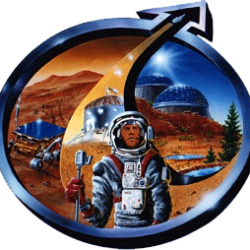
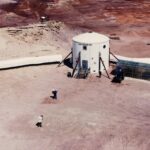
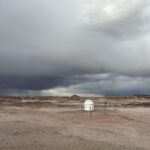

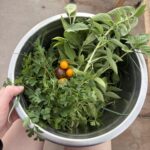
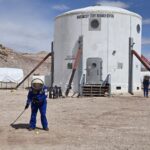

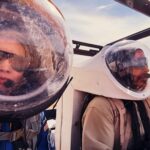

You must be logged in to post a comment.